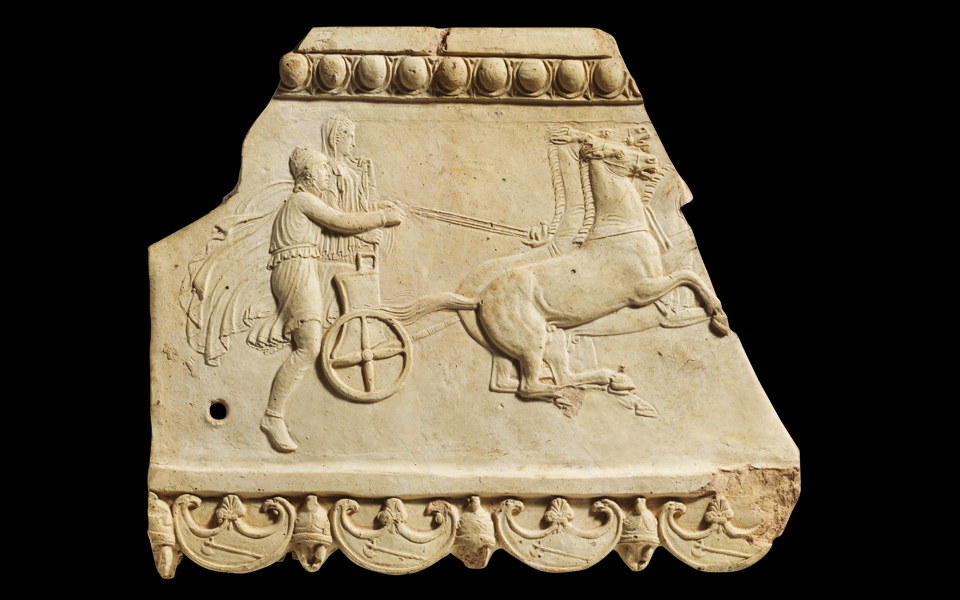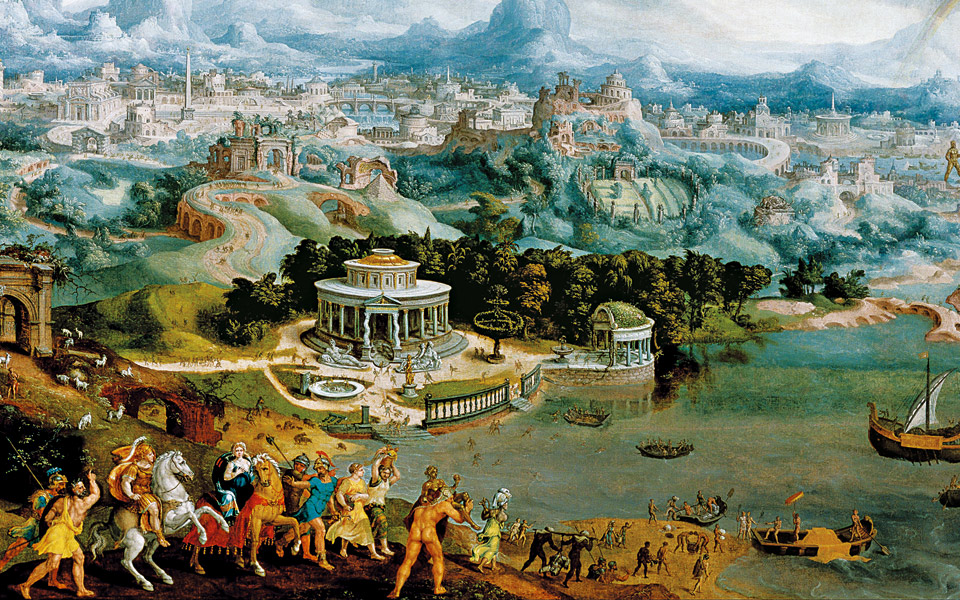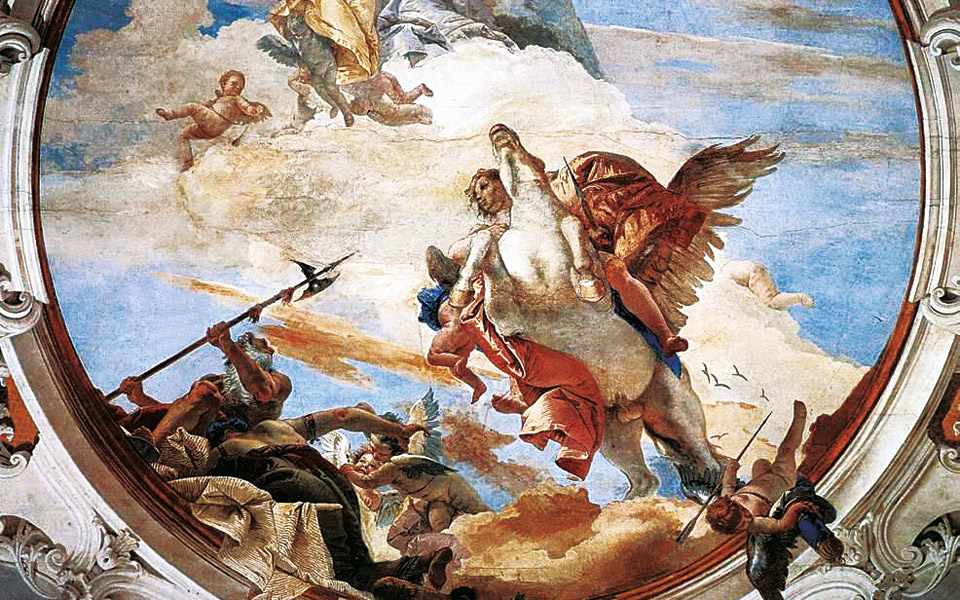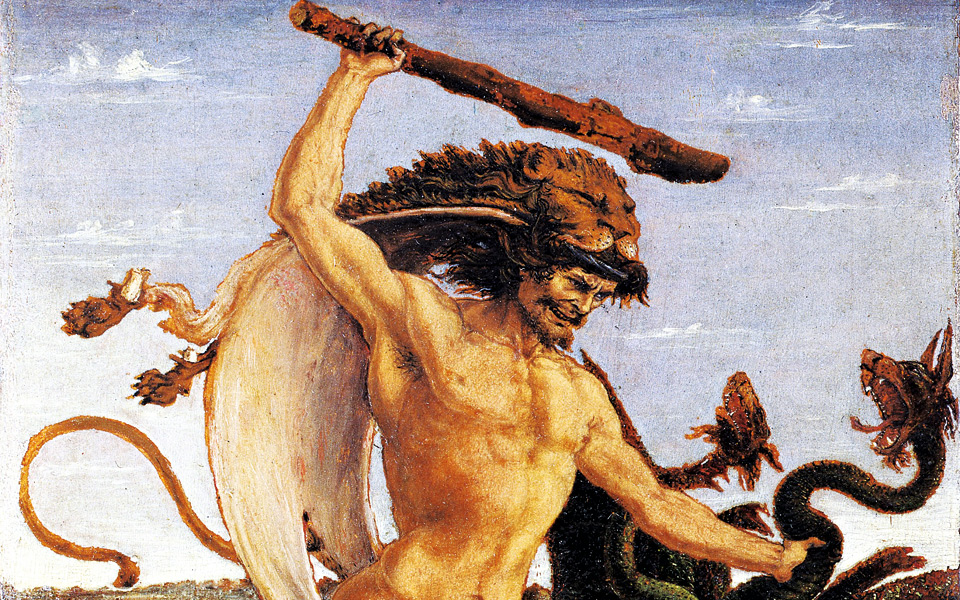The Peloponnese is a region abundant not only in Greek history and key archaeological sites, but also in ancient mythology. The gods and heroes of the Peloponnese often served a range of pragmatic as well as spiritual purposes, from lending divine legitimacy to rulers or cities, to offering comfort and medical aid to the infirm, or exhibiting through vivid, didactic characters and stories, the strengths and weaknesses of humankind. Beginning with Homer (as early as the 8th or 7th century BC), and embellished by Aeschylus, Sophocles, Euripides and many other contemporary Classical or later writers, the Peloponnesian landscape became a place bristling with Olympian gods, local and Panhellenic heroes, legendary, pseudo-historical figures and wild, monstrous creatures that required suppressing and sometimes violent, even deadly control – much like the land itself.
Archaeology has also greatly contributed to our present-day understanding of Peloponnesian beliefs and cults. Over the past century, temples and sanctuaries have been discovered which were dedicated to Zeus and Hera at Olympia; Poseidon at Isthmia; Apollo at Corinth and Bassae; Athena (or Hera) at Mycenae; Aphrodite at Kenchreai and Acrocorinth; Asclepius at Epidaurus, Corinth and Messene; Heracles at Nemea; and the list goes on…
“ The gods and heroes of the Peloponnese often served a range of pragmatic as well as spiritual purposes, from lending divine legitimacy to rulers or cities, to offering comfort and medical aid to the infirm, or exhibiting the strengths and weaknesses of humankind. ”

“ Sisyphus, a legendary king, is best remembered for religious irreverence and his resulting punishment in the Underworld: condemned to endure perpetual struggle by repeatedly rolling an enormous boulder up a hill. ”
Heracles and Pelops were the most prominent heroes of the Peloponnese, but other great characters – good and evil – also became familiar names. Theseus, the beloved Athenian hero, was born at Troezen in the Argolid. Medea, the Eastern princess who returned from gold-rich Colchis with her Greek husband Jason, settled at Corinth, where she infamously killed her own children. Bellerophon, the Corinthian master of the winged horse Pegasus, slew the fire-breathing Chimaera (a lion-headed goat with a snake’s tail) and defeated the Amazons. Sisyphus, a legendary king, was said to reside on Acrocorinth. He is best remembered for religious irreverence and his resulting punishment in the Underworld: condemned to endure perpetual struggle by repeatedly rolling an enormous boulder up a hill. At Isthmia, Melicertes, the son of a divine Theban princess, arrived on the back of a dolphin and became a worshipped protector of sailors. Local funeral games in his honor eventually were transformed into the Panhellenic Isthmian Games.
Homeric characters still haunt many corners of the Peloponnese. Mycenae was ruled by Agamemnon, who sacrificed his own daughter Iphigenia to reach Troy and was himself brutally slain by his wife Clytemnestra. The murderous cycle continued, as she too died at the hands of her son Orestes, aided by his sister Electra. Earlier, the saga of the Trojan War and its eventual aftermath had started further south, in Sparta, where king Menelaus had lost his queen, Helen, to Paris. Another Homeric figure, Nestor, reigned at “sandy Pylos,” where he extended hospitality to Telemachus during the young man’s quest for his long-missing father Odysseus.
Local myths flourished throughout the Peloponnese, as every little corner and community boasted their own divine associations and preferred mythological traditions. Such lesser-known stories are exemplified at Tegea, where the temple of Athena Alea, decorated by the 4th century BC sculptor Skopas, presented a scene of the Calydonian boar hunt (east pediment) and the battle of Telephos, son of Heracles, against the Achaeans in northwest Asia Minor (west pediment).

Two favorite ancient stories were the Amazonomachy (Battle of Greeks against Amazons) and the Centauromachy (Battle of the Thessalian Lapiths against their rude neighbors, the Centaurs), both of which symbolized the ancient Greeks’ victorious struggle to civilize the strange, often monstrously violent natural world. Well known from the Parthenon in Athens, these two myths also appear in the architectural decoration of Peloponnesian temples. The Amazonomachy was portrayed in the Ionic frieze of the Apollo temple at Bassae, as well as on the western pediment of the Asclepius temple at Epidaurus and around the proskenion (stage) of the theater at Corinth. The Centauromachy could also be seen in the Bassae frieze and in the western pediment of the Temple of Zeus at Olympia.
The opposite, eastern pediment of this Olympian temple was a showcase for one of the region’s greatest heroes, Pelops, who had fallen in love with Hippodamia, daughter of Oenomaus, the king of Pisa in the western Peloponnese. Oenomaus would wed his daughter only to a suitor who could defeat him in a chariot race. Oenomaus always won, until Pelops bribed Myrtilus to sabotage his master’s axle pins. After Oenomaus was killed, Pelops married Hippodamia and became ruler of the entire region.
“ Two favorite ancient stories were the Amazonomachy and the Centauromachy, both of which symbolized the ancient Greeks’ victorious struggle to civilize the strange, often monstrously violent natural world. ”

“ Driven mad by jealous Hera, Heracles killed his own family, then, for atonement, was tasked with near-impossible feats. ”
The most celebrated hero of the Peloponnese, and of the whole Greek world, was Heracles. Images of the hero – recognizable for his lion-skin 3 cape, wooden club and bow and arrows – appeared on Geometric and early Archaic vases, while his status as a demi-god was secure by at least the late 6th century BC. Heracles’ origin in the northeastern Peloponnese is demonstrated by his lineage, as the son of Zeus and Alcmene, princess of Mycenae, and by his 12 labors, assigned by Eurystheus, the mythical ruler of Tiryns or Argos. His first six missions are set in he general vicinity of his native Argolid. Driven mad by jealous Hera, Heracles killed his own family, then, for atonement, was tasked with near-impossible feats. First, he slew the Nemean Lion and decapitated the nine-headed Hydra of Lerna. Afterward, he captured the Erymanthian Βoar in northwestern Arcadia and the Golden-Horned hind of Mt Cerynea in nearby Achaea. For his fifth and sixth labors, Heracles cleaned the dung-filled stables of King Augeas of Elis, then killed the Stymphalian birds in Corinthia.
These six labors may have implied the expansion of Argive ambitions and the regional popularity of Heracles’ cult. The Dorian rulers of Sparta, Argos and Messene all sought legitimacy by claiming descent from Heracles’ sons (Heracleidae). Heracles’ fame rapidly spread far and wide, with the northern Greek Argead Dynasty of Macedonia (700-310 BC) also claiming the divine hero as their progenitor. Today, however, the fabled Spartans, aided by Hollywood, seem to have eclipsed even Heracles and once again to have exerted their dominance as the mighty heroes of the Peloponnese.












